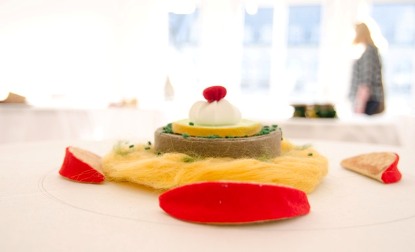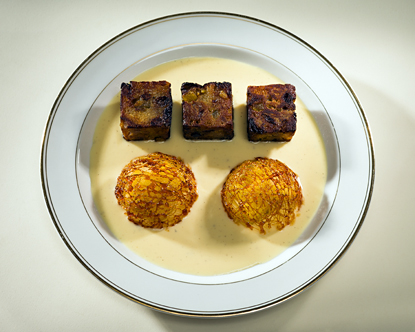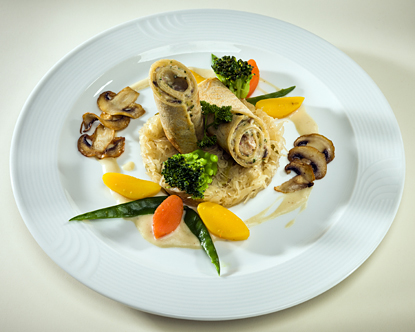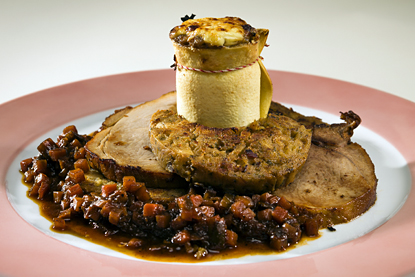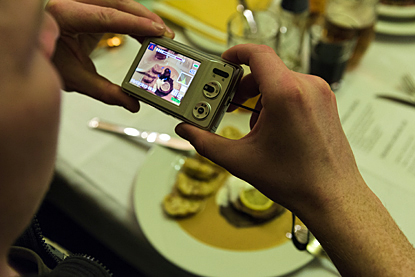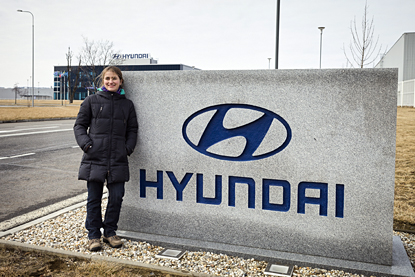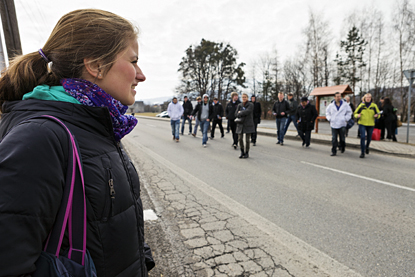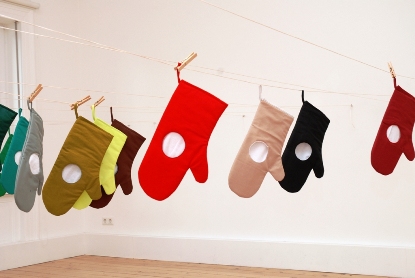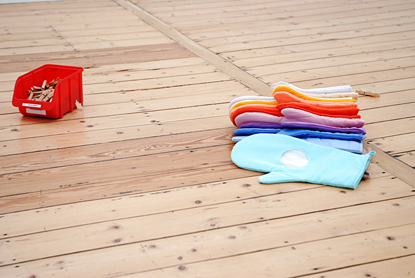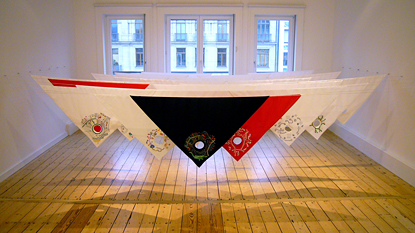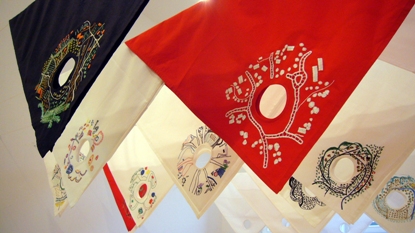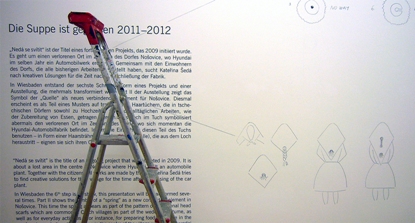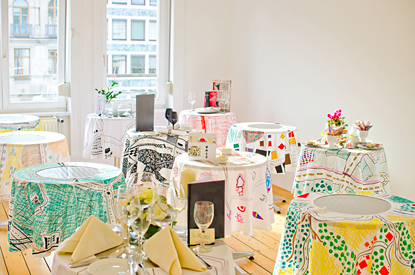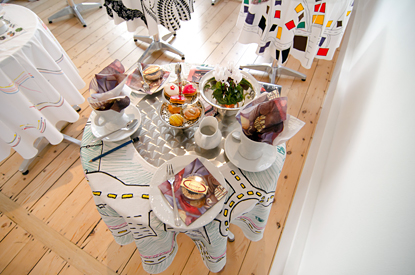Die Suppe ist gegessen V / June 2 to Summer 2012
Die Suppe ist gegessen IV / March 18 to May 6, 2012
Action „Die Suppe ist gegessen“
Nošovice / March 9 to 11, 2012
Wiesbaden / March 28 and 29, 2012
Die Suppe ist gegessen III / January 31 to March 4, 2012
The 3rd part of the exhibition is the first direct preparation for the trip of 26 chefs from Wiesbaden to Nošovice. From March 9 to 11 they will research on-site for solutions how to serve Czech food in a new way. The kitchen gloves, now on view in the exhibition, will then be used on the left hand as sketch-books and on the right hand to cook.
Die Suppe ist gegessen II / November 23, 2011, to January 29, 2012
Part II of the exhibition "Die Suppe ist gegessen" by Follow Fluxus stipendiary Kateřina Šedá shows the symbol of the "source" as a new connecting element in Nošovice. This time the source appears as part of the pattern on the headdress that is traditionally used in Czech villages as part of the wedding costume, as well as for everyday activities – for instance, for preparing food. The hole in the scarf again symbolizes the lost place in the middle of the village where the Hyundai automobile plant is now located. By using this part of the clothing, people reacquire this place – this time going out of the circle leads.
Die Suppe ist gegessen I / September 11 to November 20, 2011
For the first part of the exhibition, representatives of diverse restaurants from Wiesbaden set 26 tables in the exhibition space. They could choose among embroidered tablecloths showing a hole in their centre. Their pattern is based on drawings, the people of Nošovice have made of their village. Kateřina Šedá assigned embroiderers to transfer the sketches to round cloths.
The Korean car manufacturer Hyundai established in 2008 a gigantic production plant in the midst of the Czech village Nošovice, dividing the village geographically and socially. When Kateřina Šedá visited 2008 the village, she observed an up to then not known indifference and resignation. On the one hand the Korean car producer ignored the grown local structures, on the other hand the population was unable to stop the construction of the plant or to adapt to the new situation.„NEDÁ SE SVÍTIT “(there is not light), was the answer of most inhabitants when Šedá inquired about the Huyndai plant, becoming the impulse of her creative encounter with the resignation in NoÅ¡ovice. Completely in the sense of social sculpture, the search for ways out became her art project, which she will continue until the unity of the village is restored. All her actions and projects, which circle around the future of the village and the rapprochement of its inhabitants, are based on each other and in constant transformation. During the three-month stay in Wiesbaden Kateřina Šedá realised that the Hessian state capital, contrary to Nošovice, is a self-contained functioning unit. Two aspects, the translation of the Czech proverb „NEDÁ SE SVÍTIT“ into the German language and Wiesbaden characterised by water, played an important role for her within the cognitive process.The majority of 10 translators suggested the idiom „DIE SUPPE IST GEGESSEN “, (The Soup Is Eaten) as German counterpart for “NEDÁ SE SVÍTIT“. As a result Kateřina Šedá decided to look to the future (the main course) for the solution of the problem. Visiting restaurants in Wiesbaden she noticed that the meals are arranged centrically on the plate. In the Czech Republic similar meals are usually presented in such a way as the village and the car plant presents itself: divided into two halves with a hole in the centre for the sauce.For her Wiesbaden project the main course will become the metaphor for the future of the village Nošovice after the era car plant: Following the 26 springs of Wiesbaden and their symbolic presentation as a split fountain, flowing together again in a round basin, 26 cooks from Wiesbaden will travel together with Kateřina Šedá to Nošovice. There they will visit restaurants and make themselves familiar with the situation of the village and the local presentation of main courses. Later they will demonstrate their way of arranging Czech main courses, demonstrating so to speak on a plate how the problem in the middle of the plate/village can be solved. The arranged meals will serve in a further step as models for architects and town planners, giving an outlook on the village centre after the closing of the car plant and achieving a similar harmony, as Kateřina Šedá observed in Wiesbaden.The exhibition in the NKV will transform and accompany each individual step of the project.
With friendly support

